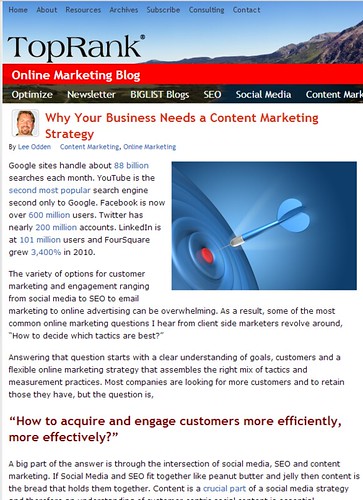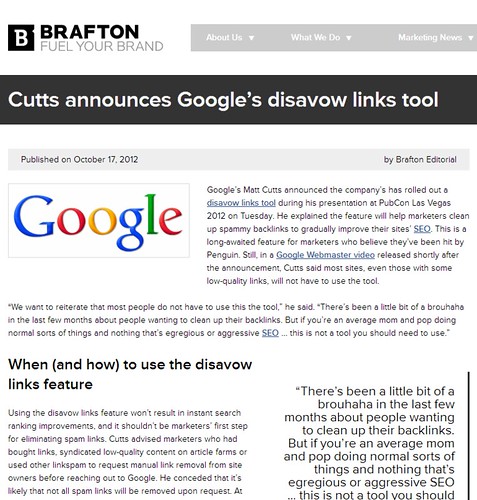 News on Social Marketing, according to Bosmol Social Media News: at last, Yahoo and Microsoft joined together to create a better mega search engine to beat the current market leader, Google. This 10 year deal allows Microsoft access to Yahoo search technologies in order to integrate into their current search engine. Bing is used as the main search engine algorithm to display search results. Though paid advertising will be merged, the companies retain its separate entities.
News on Social Marketing, according to Bosmol Social Media News: at last, Yahoo and Microsoft joined together to create a better mega search engine to beat the current market leader, Google. This 10 year deal allows Microsoft access to Yahoo search technologies in order to integrate into their current search engine. Bing is used as the main search engine algorithm to display search results. Though paid advertising will be merged, the companies retain its separate entities.
Following this deal Steve Ballmer stated that, “Through this agreement with Yahoo!, we will create more innovation in search, better value for advertisers and real consumer choice in a market currently dominated by a single company. Success in search requires both innovation and scale. With our new Bing search platform, we’ve created breakthrough innovation and features. This agreement with Yahoo! will provide the scale we need to deliver even more rapid advances in relevancy and usefulness. Microsoft and Yahoo! know there’s so much more that search could be. This agreement gives us the scale and resources to create the future of search.”
Offering a revenue sharing agreement is Microsoft’s compensation to Yahoo. This deal is believed to be tricky which may bring about some chaos to the Google team. This partnership between Yahoo and Microsoft is supposed to earn an additional $275 million dollars to each company.
Read more at Microsoft and Yahoo Teaming to Create Mega Search Engine
 News on Content Marketing, according to ToprRank: Google is the leading search engine handling almost 88 billion searches, with YouTube as the second most popular search engine. Followed by Facebook with more than 600 million users, Twitter having almost 200 million accounts, LinkedIn with 101 million users and lastly, FourSquare increased to 3,400% in 2010.
News on Content Marketing, according to ToprRank: Google is the leading search engine handling almost 88 billion searches, with YouTube as the second most popular search engine. Followed by Facebook with more than 600 million users, Twitter having almost 200 million accounts, LinkedIn with 101 million users and lastly, FourSquare increased to 3,400% in 2010.
“How to decide which tactics are best?” This became the most frequent online marketing question. As an answer to this question, begin with a clear understanding of goals, customers and a flexible online marketing strategy that assembles the right mix of tactics and measurement practices.
“How to acquire and engage customers more efficiently, more effectively?” This question arises since most companies look for more customers and preserve those they have. Intersection of social media, SEO and content marketing are ways to answer this question. Since content is a critical part of a social media strategy, understanding of customer-centric social content is important.
Majority of corporate marketing is structured to produce content around products and services vs. becoming a publisher. The growth of publishing tools and platforms help companies create content and media that rivals some news organizations.
Content fuels customer engagement, educate customers on products, services, the buying process and how to get the most out of the purchase. It can continue to reinforce the relationship and inspire renewals, upgrades and referrals.
Reorganizing content marketing strategy and incorporate Social Media and SEO, is the big challenge for companies to fulfill expectations for ease of discovery, consumption and sharing. Companies with content that educate and make it easy to follow a logical conclusion to buy will succeed the enormously competitive online marketing race.
Read more at Why Your Business Needs a Content Marketing Strategy
 News on Google Marketing, according to Brafton: according to Matt Cutts, Google rolled out a disavow links tool which helps marketers clean up spammy backlinks to improve their sites’ SEO. And that most sites, even those with some low-quality links, will not have to use the tool.
News on Google Marketing, according to Brafton: according to Matt Cutts, Google rolled out a disavow links tool which helps marketers clean up spammy backlinks to improve their sites’ SEO. And that most sites, even those with some low-quality links, will not have to use the tool.
When (and how) to use the disavow links feature
The disavow links feature don’t give an immediate search ranking improvements and shouldn’t be use as first step to eliminate spam links. Cutts advised marketers to request manual link removal from site owners before reaching out to Google especially those who purchased links, syndicated low-quality content on article farms or used other linkspam.
This tool helps marketers create a textfile and upload unwanted linking domains to begin the process and helps sites enhance a search presence. But Google is not required to remove links if the company distrusts the request.
Identifying the links to remove
Google rolled out a tool allowing marketers and webmasters to download lists of their inbound links. This is use to assess most recent links to their sites.
Cutts stated that, a small percentage of webmasters and marketers receive link warnings from Google. Sites that previously engaged in some form of linkspam are the only ones that need to disavow links.
Read more at Cutts announces Google’s disavow links tool
Other Social Marketing Articles of Interest
App Engagement: The Matrix Reloaded
3 Keys to Scaling Content Marketing Success
